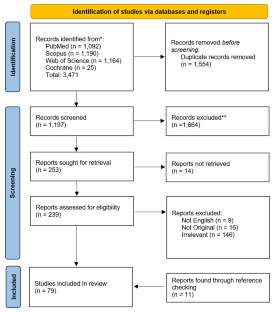Journal of Neuro-Oncology ( IF 3.9 ) Pub Date : 2024-04-08 , DOI: 10.1007/s11060-024-04658-7 Seyed Farzad Maroufi , Manijeh Assar , MirHojjat Khorasanizadeh , Fatemeh Mahdavi Sabet , Mohammadmahdi Sabahi , Rocco Dabecco , Badih Adada , Gabriel Zada , Hamid Borghei-Razavi

|
Purpose
In patients with acromegaly, secondary treatment options in cases of hormonal non-remission or tumor progression include repeat transsphenoidal surgery (TSS), radiation-based treatment (RT), or medical therapy (MT). In this study, we aim to evaluate the clinical effectiveness of various second-line treatment options for acromegaly.
Methods
Using the PRISMA guideline, a systematic review was performed by searching MEDLINE (PubMed), Web of Science, Scopus, and Cochrane electronic bibliographic databases from conception to the end of 2022. Outcomes of interest included hormonal remission rate, complications, and mortality associated with each treatment modality for refractory acromegaly.
Results
A total of 79 studies including 3,208 refractory acromegaly patients (44.90% males) were analyzed, with a mean patient age of 43.89 years. There was a statistically significant difference between various therapeutic modalities in terms of remission rate, with MT offering the highest remission rate (62.55%), followed by RT (50.15%) and TSS (37.39%). Subgroup analysis of radiotherapeutic and medical modalities did not show a significant difference in remission rate between different kinds of sub-modalities in each treatment approach. Recurrence following secondary treatment was not different in patients treated with reoperation TSS compared to other modalities.
Conclusions
The management of persistent and recurrent acromegaly optimally requires a multimodal approach. In different scenarios of refractory acromegaly based on previous treatment, secondary treatments may vary in terms of remission rate and complications. Medical agents provide considerable effectiveness as a second-line therapy for recurrent or persistent disease. In selected cases, however, reoperation still provides an opportunity for cure or freedom from medications. The findings of this study may help clinicians to prioritize varying options involved in this multifaceted decision-making process.
中文翻译:

复发性和持续性肢端肥大症多模式治疗方案的评估:系统评价和荟萃分析
目的
对于肢端肥大症患者,激素无缓解或肿瘤进展情况下的二级治疗选择包括重复经蝶手术 (TSS)、放射治疗 (RT) 或药物治疗 (MT)。在这项研究中,我们的目的是评估肢端肥大症各种二线治疗方案的临床疗效。
方法
使用 PRISMA 指南,通过搜索 MEDLINE (PubMed)、Web of Science、Scopus 和 Cochrane 电子书目数据库进行了从受孕到 2022 年底的系统评价。感兴趣的结果包括与激素缓解率、并发症和死亡率相关的结果。难治性肢端肥大症的每种治疗方式。
结果
共分析了 79 项研究,包括 3,208 名难治性肢端肥大症患者(44.90% 男性),患者平均年龄为 43.89 岁。不同治疗方式的缓解率差异有统计学意义,其中MT缓解率最高(62.55%),其次是RT(50.15%)和TSS(37.39%)。放射治疗和医疗方式的亚组分析并未显示每种治疗方法中不同种类的亚方式之间的缓解率存在显着差异。与其他治疗方式相比,接受再次手术 TSS 治疗的患者二次治疗后的复发没有差异。
结论
持续性和复发性肢端肥大症的最佳治疗需要采用多模式方法。在基于既往治疗的难治性肢端肥大症的不同情况下,二次治疗在缓解率和并发症方面可能会有所不同。药物作为复发性或持续性疾病的二线疗法提供了相当大的有效性。然而,在某些情况下,再次手术仍然提供治愈或免于药物治疗的机会。这项研究的结果可能有助于临床医生优先考虑这个多方面决策过程中涉及的不同选项。



























 京公网安备 11010802027423号
京公网安备 11010802027423号